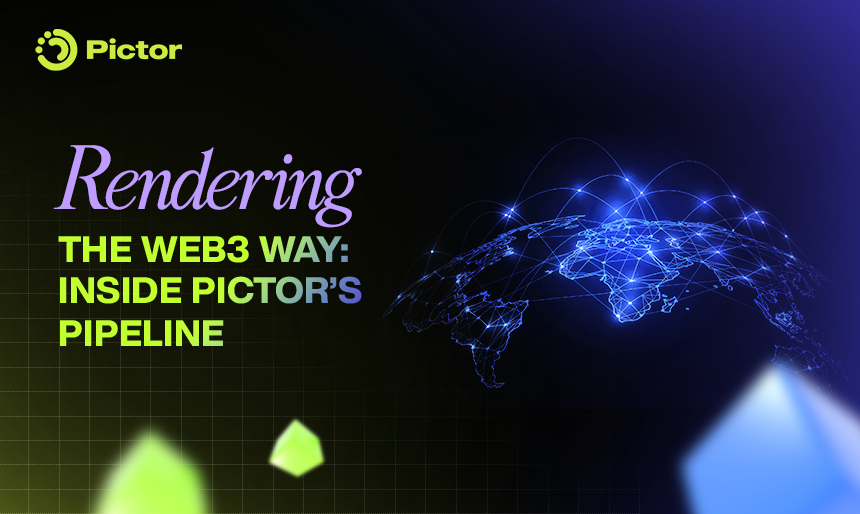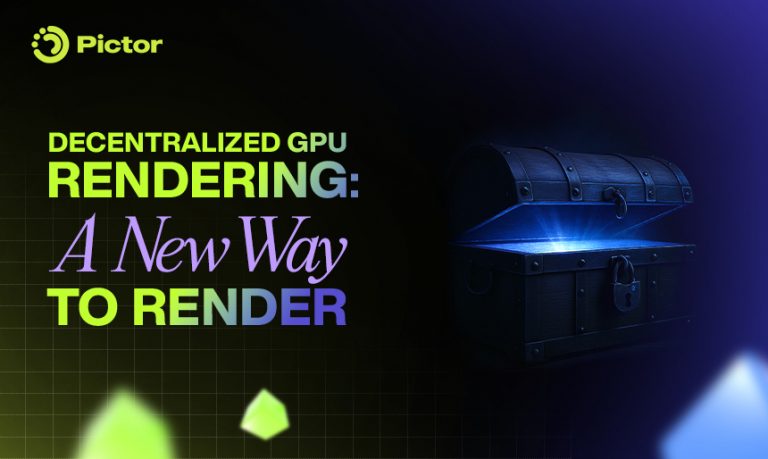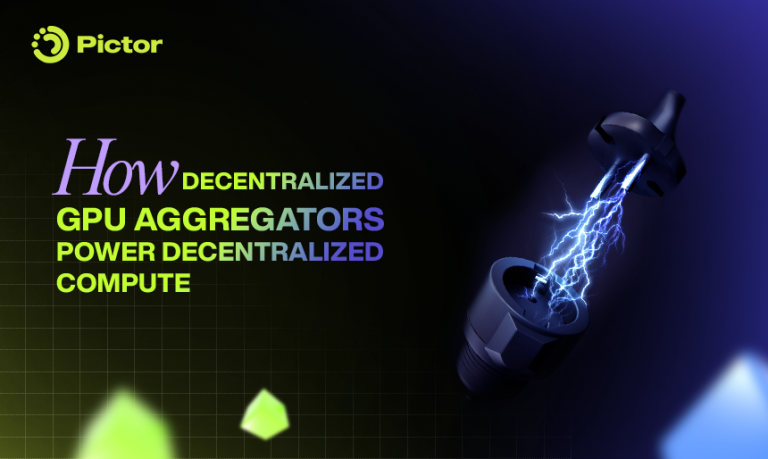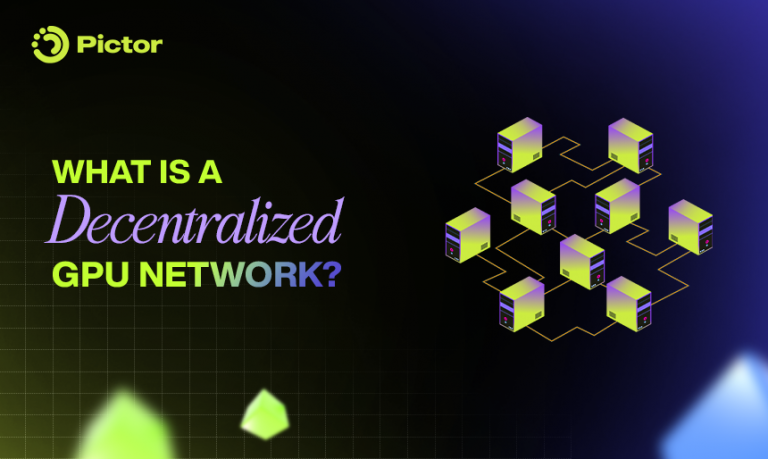“Pictor Network: Built on blockchain – Powered by decentralized storage – Owned by creators.”
1. Let’s Talk About the Reality of Rendering Pipelines
If you’ve worked with 3D pipelines, you already know that rendering isn’t just about “sending something to the cloud.” There’s a full data pipeline involved:
- You start with input files: scenes, assets, textures, and cache data
- You need compute to process them: rendering frames, passes, effects
- Then you end up with output files: often huge, multi-format, and critical to your workflow
Most render platforms today handle this via traditional cloud setups. It’s centralized and fast, but also comes with trade-offs:
- Your files go into a black box
- You can’t verify how your job was handled
- Your output might disappear after 7–30 days
- And you rely on systems you don’t own or control
If you’re okay with that, great. But if you’re building for the long term, especially in a Web3 or open-source context, it’s not ideal.
2. This Is Where Pictor Network Comes In
What if rendering wasn’t tied to any one company’s infrastructure? What if the entire job, from input upload to final render and payout, could run without relying on a backend you don’t control?
That’s what we set out to build with Pictor Network.
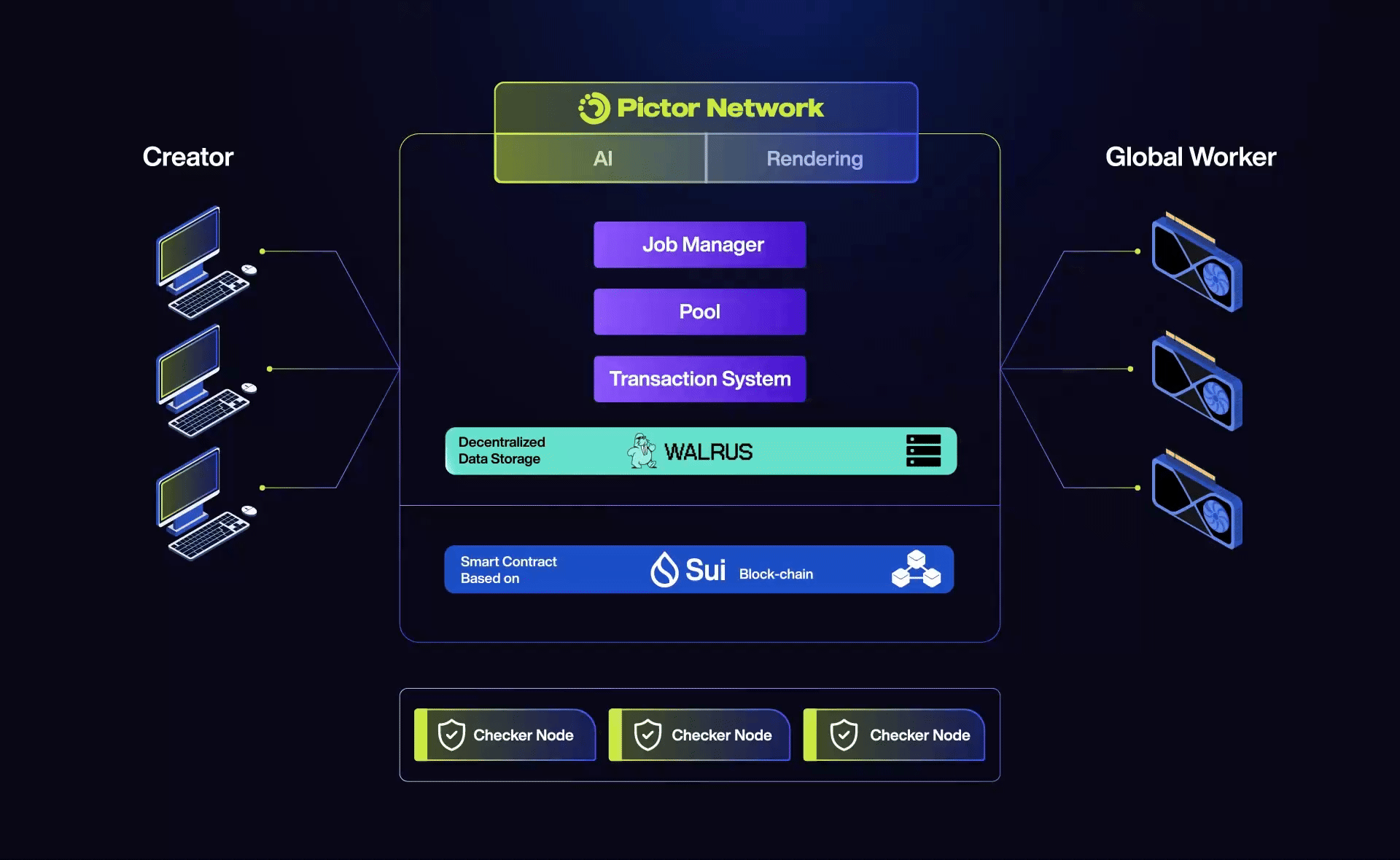
Pictor Network’s General Model
At its core, Pictor Network is a decentralized GPU network. But it doesn’t stop at compute. It’s designed as part of a larger stack, where job logic runs on-chain, and the data layer is distributed by default.
We didn’t want to build another cloud with a token. We wanted to rethink rendering infrastructure for an open, verifiable ecosystem. So we built Pictor Network to connect directly with two foundations:
- Blockchain for job coordination and validation logic
- Decentralized storage for persistent and verifiable file handling
Together, they allow Pictor Network to operate differently, not just as a GPU marketplace, but as part of a Web3-native rendering pipeline.
3. On-Chain Logic, Not Central Schedulers
What does “on-chain” actually mean in rendering?
In most platforms, job handling happens in the backend. A private system assigns your job, tracks progress, and (maybe) lets you know when it’s done. If something goes wrong, you’re stuck waiting for support.
Pictor Network does this differently by putting that logic on-chain. Instead of hiding it behind internal APIs, Pictor Network uses smart contracts on the blockchain to define how jobs move through the system:
- Who can pick up the job
- How results are verified
- What conditions must be met to mark it complete
Why does that matter to creators?
When job coordination is on-chain, you get:
- A clear view of what happened to your render
- Built-in logic for validation
- A system where steps are transparent and auditable
This doesn’t mean artists have to write smart contracts. It just means the platform behaves consistently, and you don’t have to trust anyone’s backend to make sure your job runs correctly.
A smarter way to handle rendering
In Pictor Network, every render job follows rules written in code, not policy.
You submit a job → it’s matched → it gets verified → and it completes, all recorded transparently.
It’s not magic. It’s just logic you can inspect instead of a black box, you have to believe.
4. Storage That Respects Your Files and Your Ownership
Most 3D artists don’t think much about storage until something goes wrong. A missing texture. A mismatched version. A render farm that deletes your files after 30 days. It’s easy to assume storage is just the place where your files sit. In reality, however, storage is part of the rendering process, and if it breaks, so does everything else.
In decentralized rendering, where compute is done across a global network of machines, the way your files are stored becomes even more important. That’s why Pictor Network integrates with a decentralized storage network built for persistence, access control, and transparency.
Storage That Matches How You Actually Work
In 3D pipelines, you rarely just upload a single scene file. You’re sending up entire project folders:
- .blend,.c4d scenes
- Linked textures, animation caches, simulation files
- HDRIs, alembic exports, proxy renders, LUTs
If even one asset is missing or out of sync, the render can break. And when you’re using a traditional cloud-based render farm, it’s often hard to tell what version of the file got used, or whether something got replaced.
With Pictor Network, your files are uploaded into a decentralized network, and each file is hashed, meaning its content is locked and verifiable. No overwrites, no “wrong version” guesswork. The GPU node rendering your job has to use the exact files you uploaded, nothing more, nothing less.
You Don’t Have to Trust a Black Box
When rendering through a centralized platform, your work enters a system you can’t see into. You don’t know who handles your data, how it’s stored, or what happens after. Some farms auto-delete after a few days. Others charge for long-term storage. In either case, your creative work is out of your hands the moment it leaves your desktop.
With decentralized storage, you stay in control. Your files don’t “belong” to the platform. They’re distributed across a network and tied to your upload through content addressing. You can retrieve them anytime. If needed, you can prove that version 2.3.1 of your scene was exactly what got rendered, not an older version, or something modified along the way.
You Keep Ownership
Creative assets are personal. They’re often the result of days or weeks of iteration. And for freelancers or studios working with licensed materials, they’re not just files, they’re intellectual property.
That’s why Pictor Network is built to respect ownership from the start.
Decentralized storage means:
- Your files aren’t locked behind a proprietary server
- You don’t lose access after the job runs
- You can control how long files stay and who gets to access them
We don’t think rendering should mean giving up control over your work. In fact, we think it should reinforce it.
In Pictor’s pipeline, storage isn’t just a side detail; it’s a critical part of what makes rendering secure, verifiable, and truly creator-owned.
5. Compute Is Decentralized, because the Rest Is Too
It’s easy to say you’ve decentralized rendering because the GPU nodes aren’t owned by one company. But in practice, that only matters if the rest of the system, the coordination, and the data are decentralized too.
In Pictor Network’s case, it is.
- Blockchain handles job logic: who picks up the job, how it’s verified, and how payouts are triggered.
- Decentralized storage manages input and output files: content-addressed, persistent, and not tied to any single provider.
This architecture removes a lot of the assumptions baked into traditional platforms. There’s no backend assigning jobs. No storage system decides when files get deleted. And no private ledger tracking payouts. Instead, each part of the pipeline works on its own, with the connections between them handled by protocol, not a platform.
It doesn’t magically solve every edge case. But it does make the system more transparent, more traceable, and easier to reason about, especially if you care about auditability, reproducibility, and control.
6. Final Thoughts
Most rendering platforms today still work like they did ten years ago: fast, convenient, but closed. Files go in, renders come out, but you don’t see what’s happening in between. And if something breaks or disappears, you’re left guessing.
Pictor Network tries to change that by breaking rendering into parts that are open, composable, and verifiable:
- Compute happens on a permissionless GPU network
- Job logic is handled on-chain
- Files are stored in a decentralized storage network
- And the whole process runs without a single company in the middle
It’s not perfect, but it’s a step toward something better, especially if you’re building in public, working with open pipelines, or just want a bit more transparency in your creative stack.
If you’re curious to try it or want to dig deeper:
- Try Pictor on the cloud: https://cloud.pictor.network
- Read the docs: https://docs.pictor.network
- Join Pictor Network community: 🐦 X | 👥 Telegram Chat | 📢 Telegram Annoucement | 🎥 YouTube | 💬 Discord | 💼 LinkedIn

